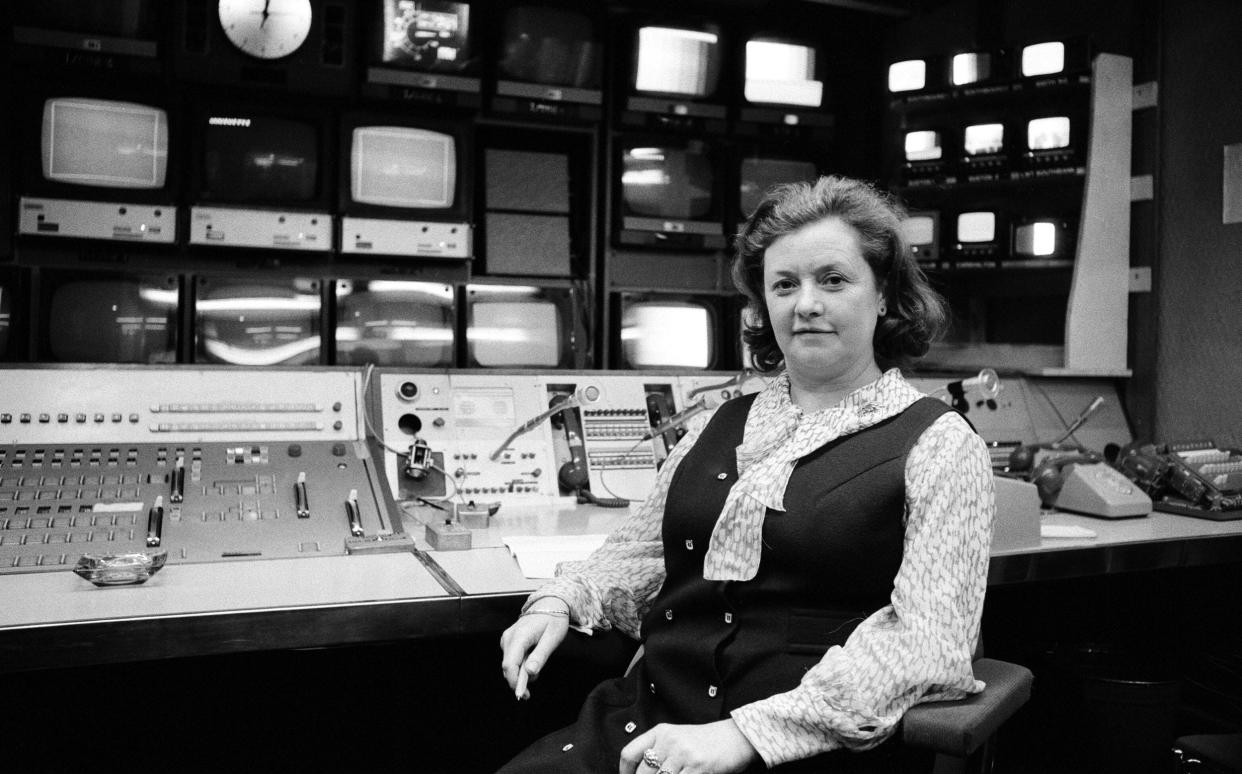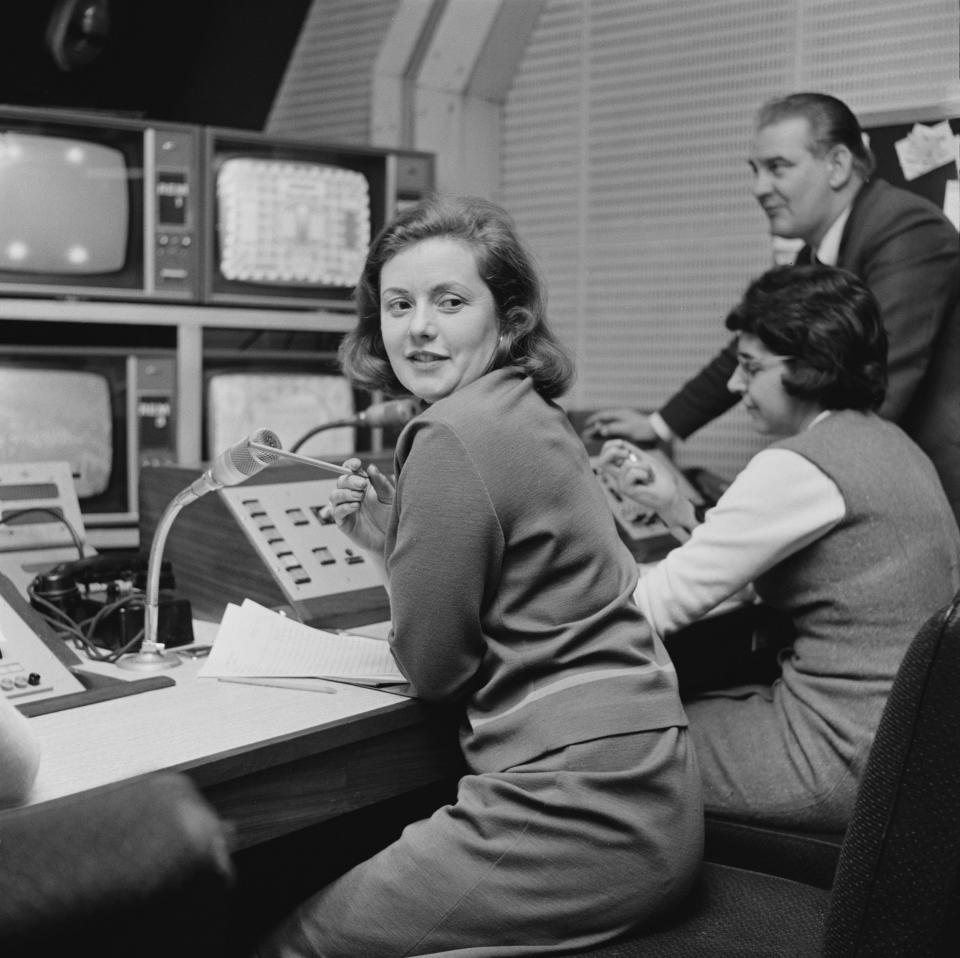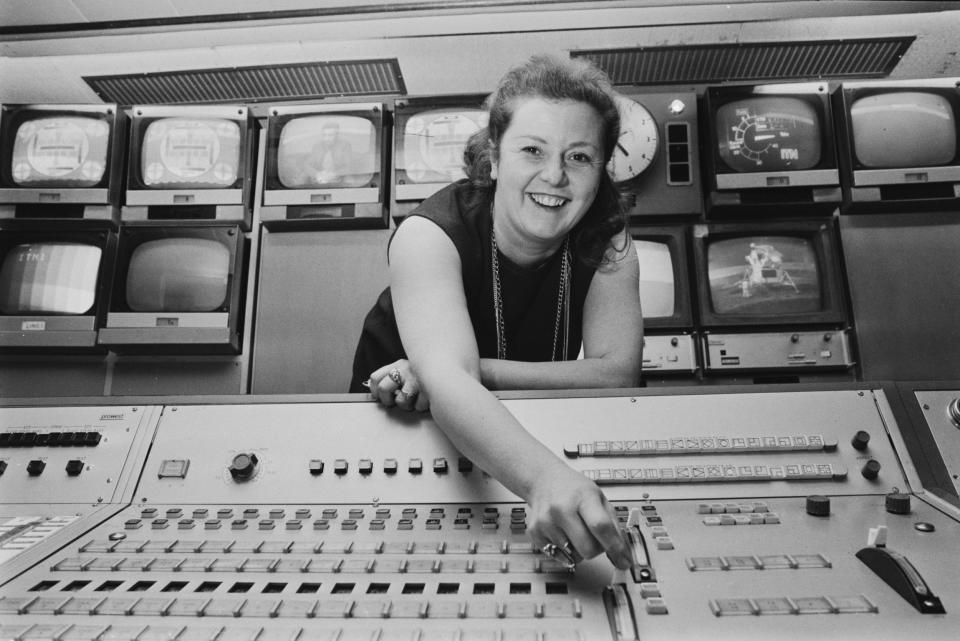Diana Edwards-Jones, mistress of the control room at ITN in its formative years – obituary

- Oops!Something went wrong.Please try again later.
- Oops!Something went wrong.Please try again later.
- Oops!Something went wrong.Please try again later.
- Oops!Something went wrong.Please try again later.
- Oops!Something went wrong.Please try again later.
Diana Edwards-Jones, who has died aged 91, began her career as a £10-a-week studio assistant at the newly founded Independent Television News in 1955 and rose rapidly to become ITN’s head of programme directors in the 1970s. During that time she became “legendary”, as the newsreader Reginald Bosanquet put it, for her colourful use of words, delivered in the cadences of her native Wales.
Though she began with no knowledge of news or current affairs, Diana Edwards-Jones became one of the most important people at ITN during its formative years. Red-haired and glamorous, she was the mistress of the control room, with a gift for plucking the most significant shots and stories from the battery of television monitors in front of her while exercising an extraordinary hold over her often large production teams.
According to a 1987 profile in the newsletter for former ITN staff, she was “the bully, the one they learnt from, the one they laughed with and were outraged by. But it was Di who got them through whatever had to be done.”
Among other achievements, she introduced the earpiece, connecting presenters with the control room. The first to use it was Tim Brinton, the newsreader and future Tory MP. Legend has it that one colleague, catching sight of Brinton as they walked past the studio, wondered why ITN was employing a presenter who was hard of hearing.
Diana Edwards-Jones was one of the first directors of ITV’s News at Ten when it hit the nation’s television screens in 1967 and was credited with the practice of fitting the day’s main headlines between the bongs of Big Ben.

Stories of her fruity way with words became the stuff of legend. Robin Day recalled meeting her on his first day at ITN in 1955. “She said: ‘Who the bloody hell are you?’ I said: ‘I’m one of the new newscasters.’ She said: ‘Christ, can’t the editor do better than that?’ So naturally one warmed to her.”
In his memoirs, Trevor McDonald recalled how, a few days before his debut as a news presenter, Diana Edwards-Jones offered to give him “a few practice sessions”.
“It would be a travesty, obvious to anyone who worked at ITN at the time,” McDonald went on, “if I did not add that those were emphatically not the words Miss Edwards-Jones used... ‘You old fart,’ was I think one of her more polite addresses, and she added for good measure that the rehearsals would prove if I was ‘any bloody good’. ”
In February 1974 Diana Edwards-Jones became the first woman in charge of a television election special, a position she maintained over the next three contests, culminating in the general election of 1983.
She admitted to suffering from such chronic stage fright on these occasions that she felt unable to move at the end of the programme, though as Jeremy Potter noted in his book Independent Television in Britain, terror never stemmed the flow of pithy instructions to presenters in the studio or technicians and reporters in the field, “nor did it inhibit the seasoning of dulcet expletives floating over the air into earpieces all over the country”.
“Just f---ing start talking,” she was said to have shouted into the earpiece of one reticent reporter at a constituency count.

Yet Diana Edwards-Jones was a warm, kindly woman with an irreverent sense of humour and a great gift for friendship. She became a loyal friend of Sir Alastair Burnet, whose career as a newsreader and presenter she helped to launch after he had initially joined ITN as a political editor. In 1986 they worked together on the television tribute Queen Elizabeth II: 60 Glorious Years.
Carol Barnes recalled how on one occasion Burnet was interviewing a bishop and Diana Edwards-Jones was giving instructions to the floor manager via his earpiece for the bishop to move left: “The floor manager couldn’t hear and Diana yelled, ‘Can you tell the bastard in the purple frock to move to the left?’ The bishop said: ‘Does she mean me?’ ”
Later, Diana Edwards-Jones was one of the few people who helped the veteran broadcaster in his eight-year battle with dementia, sitting and talking to him as his condition worsened. After Burnet’s death in 2012 his widow confirmed that her husband had left a generous sum (reportedly £100,000) to Diana Edwards-Jones. “We wanted her to have the money,” Lady Burnet added, “because she was such a good friend to both of us.”
An only child, Diana Elizabeth Edwards-Jones was born on December 13 1932 and brought up at Morriston, near Swansea, where her father was a GP.
Initially set upon a career on the stage, she attended the National College of Music and Drama in Cardiff. During her time there she was recruited by a friend to partner the self-confessedly “monkish” future Tory politician John Biffen to a Cambridge May Ball – an occasion he remembered, mysteriously, as “most enjoyable but lacking in gallantry”.
After a short period as a £4.10-a-week assistant stage manager to the Maudie Edwards Players, a repertory company based at the Palace Theatre, Swansea, she applied for a job as a studio manager to the BBC, which had no vacancies, and to Rediffusion, which told her it had “no jobs for women” and suggested she contacted ITN, which was putting together its launch team and would soon be transmitting from a smaller studio in the same building.
Fortified, by her own account, by Merrydown cider, she assured her interviewers that she was perfectly qualified for a job about which she knew nothing: “I told them I could type, and I hadn’t a clue, so I was back home to Wales after the interview and had typing lessons – but I was still bloody awful.”
She recalled the pre-launch rehearsals, before they went live in September 1955, as exciting. “We had no cameras or telecine machines,” she told Broadcast magazine in 1987, “nevertheless we used to have rehearsals every day in the newsroom. The reporters would go out, do their stories and then the director would cue Robin Day and Chris Chataway, cue the main projector and beam the film up on the wall.”
Within five years she had been made a director, working alongside David Nicholas in the control room: “It was quite frightening. We were left alone when Yuri Gagarin went up in space because everybody else was in Israel covering the Eichmann trial.”
In an interview with the ITN 1955 Club newsletter earlier this year, Diana Edwards-Jones summarised the qualities of a good studio director in her day. Above all, she said, a good director needed to “be able to fly by the seat of your pants”.
Diana Edwards-Jones retired and was appointed OBE in 1987. She looked forward to travelling more and going to the races “to lose some more money. And I can always do a little freelance directing if I should so desire.”
Diana Edwards-Jones, born December 13 1932, died April 14 2024

